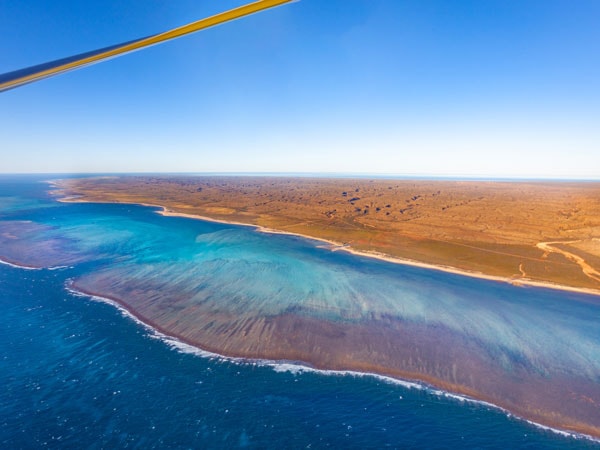18 November 2021
![]() 3 mins Read
3 mins Read

Keep reading our Australia Now series here.
Brad Norman believes oceans are the new frontier. The 52-year-old whale shark researcher has based himself off the coast of Ningaloo Reef for two months most years for the past three decades. To help protect the ocean’s largest known fish, Norman, who is a Research Fellow at the Harry Butler Institute, Murdoch University, has developed an identification system based on its markings that borrows from a pattern-identification method used to map the night sky.
“When I started researching whale sharks, their conservation status as a species was unknown. Through my research, I was able to undertake a review that resulted in them being assessed as ‘vulnerable to extinction’. It drew a lot more attention to ensuring their conservation,” says Norman, who lives in Perth when he’s not diving with these gentle giants off the deep blue waters around Ningaloo Reef.
“My interest in whale sharks has extended over half my life and I think that the whale shark is a flagship species for the health of the ocean and can help us draw attention to the need to protect it. These animals are the biggest fish of the sea and they eat tiny organisms including krill, small fish, and crab larvae. What’s imperative for their survival is that the whale sharks find productive areas of our ocean that are healthy,” he says.

Brad Norman bases himself off the coast of Ningaloo Reef for two months of the year to research whale sharks.
Brad says whale sharks can be a bellwether for the health of our oceans as their numbers have declined on our watch. “It’s important that we understand the negative short-term effect humans can have on an animal like this that has been around for millions of years.”
Brad believes his monitoring program, initially set up through his conservation group, ECOCEAN, will help make a difference to preserve the species. The system relies on images taken by divers from more than 54 countries around the world who can take photos to help identify individual whale sharks in order to better understand the elusive fish, which can reach up to 18 metres in length.

Brad says whale sharks can be a bellwether for the health of our oceans.
“Each whale shark has a unique celestial-like pattern on its body. It is like a fingerprint and because they swim so close to the surface, it has given us an opportunity to identify individuals and monitor their movements. It’s been a very successful program as it gives people a sense of stewardship, which encourages them to think about what’s in their own backyard and gain ownership of the issue, which leads to good conservation practices.”
LEAVE YOUR COMMENT